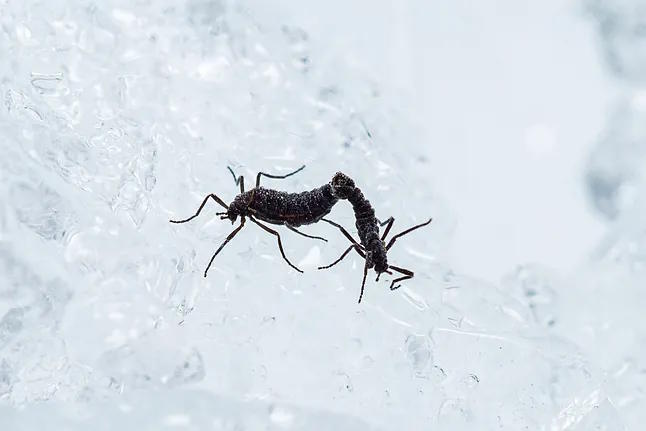When we think of Antarctic animals, most would mention penguins, and almost no one would think of a non-flying mosquito species, which is actually the only insect native to Antarctica, and the only fully terrestrial animal species on the continent.
Belgica antarctica, measures between two and six millimeters in length, and somehow survives the extreme climate, something that has historically intrigued scientists, at least until now. The way it copes with freezing temperatures offers clues to humans about cryopreservation (the preservation of living beings at low temperatures when current medicine can no longer help them), and an international research team led by Osaka Metropolitan University seems to have solved the mystery.
Professor Shin G. Goto from the Graduate School of Science and Dr. Mizuki Yoshida from Ohio State University discovered that the mosquito adapts to the seasons during its two-year life cycle, experiencing periods of inactivity in the first year, and obligatory diapause, a physiological state of inactivity, in the second.
Quiescence is a form of dormancy that occurs as an immediate response to adverse conditions, and when conditions improve, the organism becomes active again. Obligatory diapause, however, is a period of dormancy that is naturally induced at a fixed time in an organism's life cycle, a rare form observed in insects from temperate regions.
"We managed to develop a breeding method for the Antarctic mosquito over a period of six years to discover some of its environmental adaptation mechanisms," explained Dr. Yoshida. The team then discovered that Antarctic mosquito larvae usually reach their second stage in the first winter and enter a state of inactivity that allows them to quickly resume their development whenever temperatures suddenly rise.
As the second winter approaches, the larvae reach the final fourth stage but do not transform into pupae; instead, they enter obligatory diapause to emerge as adults when summer arrives. As adults, they only have a few days of life and need to find a mate, so this synchronization mechanism is key to their survival.
"We have determined that, in the case of the Antarctic mosquito, obligatory diapause ends with the arrival of low winter temperatures, so all larvae transform into pupae at the same time and emerge as adults at the same time," stated Professor Goto. "Although seasonal adaptation strategies involving passing winter multiple times using both inactivity and obligatory diapause have not been described in other organisms, we believe that insects inhabiting hostile environments like the Arctic and high altitudes could be employing similar strategies."
Due to climate change, many species are beginning to seek or develop strategies to survive in extreme conditions or those they are not accustomed to.
